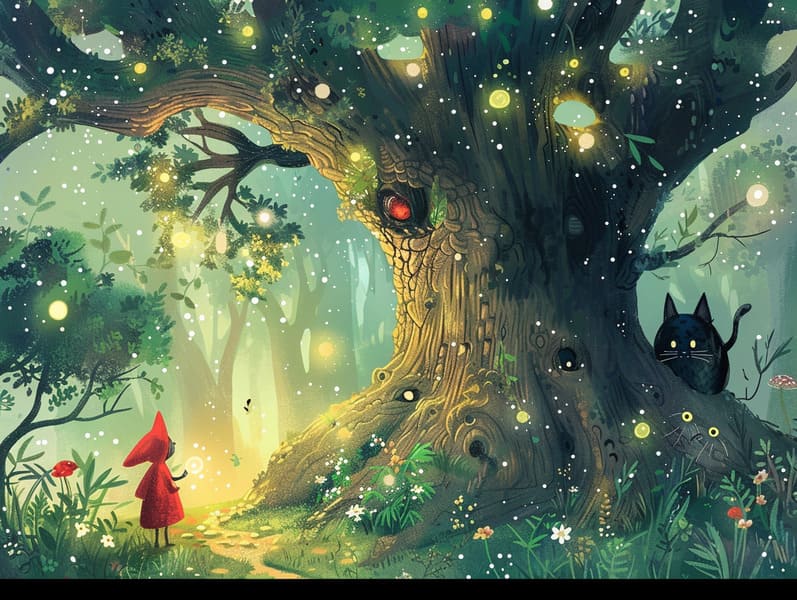Tracing the Heritage of Best Fairy Tales with the Eternal Splendor.

Timeless fairy tales have timeless appeal. These stories have been transmitted from one generation to the next far before they were ever published. They arose from a variety of societies, including Western traditions. They were initially shared among elders, often carrying themes and messages relevant to the societal norms and beliefs of the time.
The famous Grimm duo, Jacob and Wilhelm Grimm, were among the first to assemble many of these beloved tales. Their volume, "Grimm's Folk Tales," included narratives like "Cinderella," "The Story of Hansel and Gretel," and "Snow White," which have since become cornerstones in the world of traditional fairy tales. Similarly, Andersen's delightful narratives, such as "The Mermaid's Tale," and "The Little Duckling," have captured hearts worldwide, ensuring their place in the pantheon of famous fairy tales.
Despite their age, these stories remain as important as ever, especially as nighttime stories for kids. These magical stories are now available in diverse formats, including artistically illustrated books, whimsical animations, and web-based fairy tales.
Their continued relevance can be credited to several charming aspects:
Valuable Lessons: Old fairy tales often convey important moral lessons. Fairy tales like "The Story of the Boy Who Cried Wolf" teach the importance of being truthful, while "The Tale of the Tortoise and the Hare" highlight the qualities of steadfastness and unassuming nature. These narratives offer young ones clear distinctions between virtue and vice, building their moral compass in a gentle yet impactful way.
Compassion and Knowledge: Fairy tales frequently feature heroes facing trials and tribulations, prompting young listeners to relate with their struggles and encourage their triumphs. For instance, "The Story of Beauty and the Beast" conveys the merit of looking deeper to recognize the true character of a character, promoting sympathy and awareness.
Cultural Recognition: Many ancient fairy tales are rooted in the cultural contexts from which they originated. Immersing in these fairy tales can provide delightful insights into different traditions, advancing a sense of world understanding and appreciation.
Inventiveness and Fantasy: The magical elements in old fairy tales—wizardry and magic—promote children’s imaginations. These stories carry readers to fantasy realms, enhancing imaginative ideas and a sense of marvel that lasts a lifetime.
Classic fairy tales are not only magical but also didactic. They provide delightful tools in cultivating various thinking and feeling skills in young ones. When classic fairy tales are told out loud, they develop language acquisition by introducing new language and complicated sentence structures. This practice also fosters listening abilities and attention, as children listen intently, anxious to see what happens next.
Furthermore, exploring the themes and characters of traditional fairy tales can sharpen thought processes and reasoning skills. Kids are educated to pinpoint patterns, forecast, and realize cause and effect. These reflections also aid the young reveal their thoughts and feelings, nurturing their emotional intelligence.
In today’s high-tech this site era, the presence of free fairy tales online has made these stories more acquirable than ever. Internet resources and software feature wide arrays of bedtime fairy tales that can be read or listened through anytime, anywhere. Fairy tales read out loud are particularly prevalent, making available an fun way for the young to take part in these fascinating tales. Audio stories and read-out-loud stories take characters and settings to life, often supported by captivating melodies and melodies that elevate the narrative adventure.
The lasting allure of old fairy tales lies in their ability to modify to modern society while staying true to their underlying messages. Contemporary retellings of these narratives often showcase more diverse protagonists and modern settings, making them understandable to today’s audience. However, the main ideas of braveness, generosity, and honesty remain unchanged, continuing to influence young listeners of all ages.
Classic fairy tales also offer a sense of solace and knownness. They highlight a methodical narrative with a clear beginning, middle, and end, often winding up with the wrap-up of conflicts and the triumph of virtue over vice. This steadiness can be consoling for the young, extending a sense of security in an constantly changing world.
Timeless fairy tales continue to mesmerize and edify new generations, maintaining their fascination and importance in modern society. As children's night stories, they share a perfect blend of captivation and insight, fostering moral values, empathy, and creativity. The abundance of online storybooks and the in demand status of fairy tales read aloud promise that these traditional narratives remain accessible to new generations.
By retaining and passing on these narratives, we continue to recognize the rich tapestry of inventiveness and cultural heritage. Whether you are reading a colorful picture book, viewing a internet collection, or listening through an narrated book, the allure of traditional fairy tales is always within reach. These stories convey of the perpetual impact of narratives and its ability to link us across generations and cultures.
Be it you are experiencing a artistically illustrated book, enjoying a online library, or listening on an read-aloud book, the allure of popular fairy tales is always within reach.
These narratives demonstrate of the persistent strength of storytelling and its ability to unite us across eras and regions, establishing a link that enchants and educates alike.